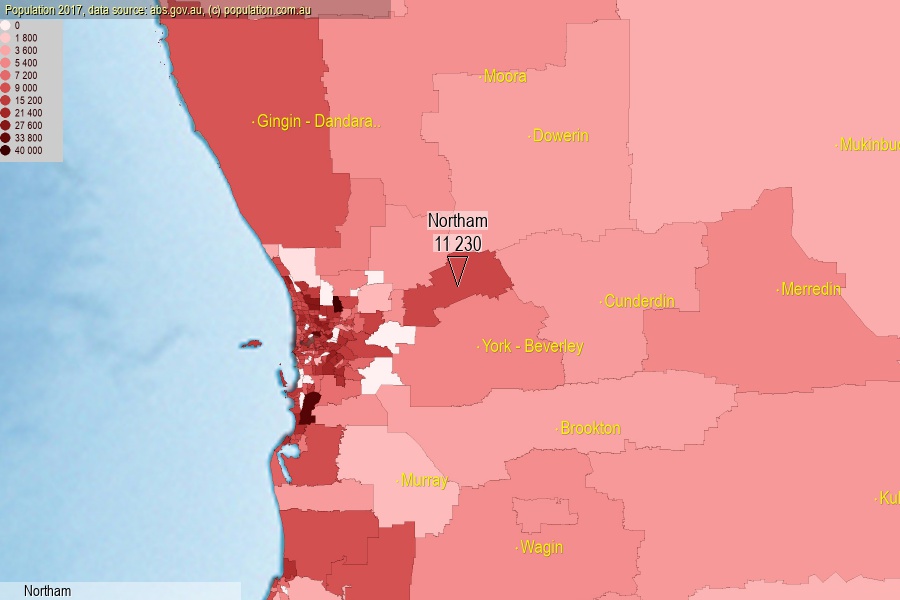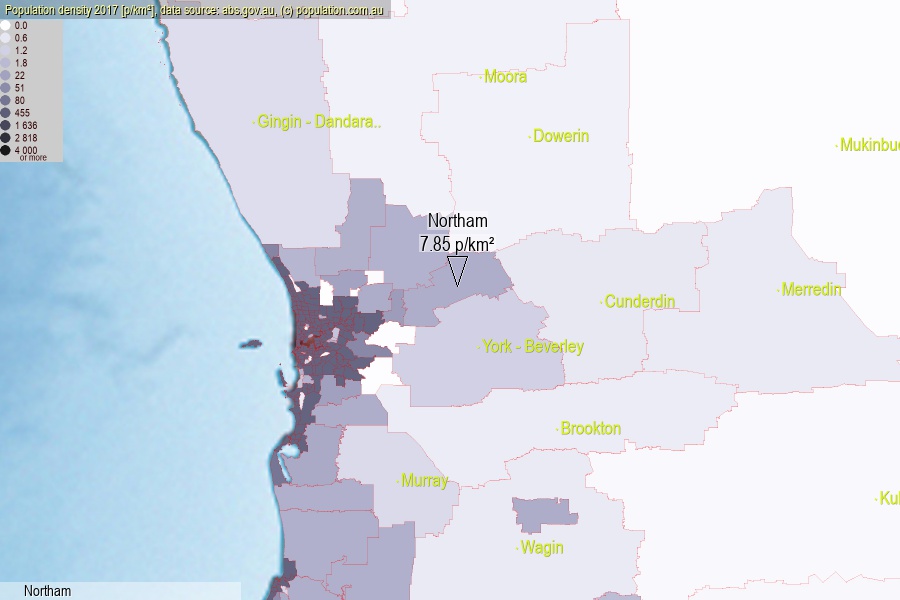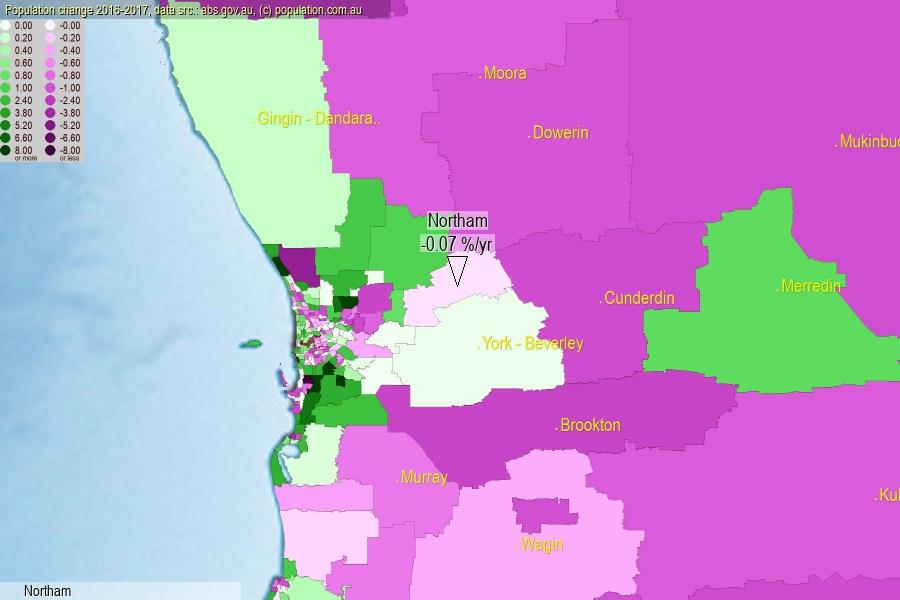 population.com.au
population.com.auLast official estimated population of Northam (as Statistical Area Level 2) was 11 230 people (on 2017-06-30)[2]. This was 0.05% of total Australian population and 0.433% of WA population. Area of Northam is 1 431.20 km², in this year population density was 7.85 p/km² . If population growth rate would be same as in period 2016-2017 (-0.07%/yr), Northam population in 2025 would be 11 166. [0]



Click to enlarge. Northam is located in the center of the images.
Population [people], population density [p./km²] and population change [%/year] [2]
View borders » (new window) [4]
[1991-1992] -1.10 %/Yr.
[1992-1993] -0.98 %/Yr.
[1993-1994] -0.58 %/Yr.
[1994-1995] +1.21 %/Yr.
[1995-1996] -0.04 %/Yr.
[1996-1997] +0.46 %/Yr.
[1997-1998] +1.52 %/Yr.
[1998-1999] +1.10 %/Yr.
[1999-2000] +0.85 %/Yr.
[2000-2001] +0.88 %/Yr.
[2001-2002] +0.18 %/Yr.
[2002-2003] -0.34 %/Yr.
[2003-2004] -1.07 %/Yr.
[2004-2005] +1.11 %/Yr.
[2005-2006] +0.10 %/Yr.
[2006-2007] -0.23 %/Yr.
[2007-2008] +1.40 %/Yr.
[2008-2009] +1.47 %/Yr.
[2009-2010] +1.11 %/Yr.
[2010-2011] +1.50 %/Yr.
[2011-2012] +3.13 %/Yr.
[2012-2013] +2.71 %/Yr.
[2013-2014] +0.85 %/Yr.
[2014-2015] -1.30 %/Yr.
[2015-2016] -1.59 %/Yr.
[2016-2017] -0.07 %/Yr.
[0] Calculated with linear interpolation from officially estimated population
[1] Read more about SA2 and Australian Statistical Geography Standard (ASGS) on abs.gov.au
[2] Population data from Australian Bureau of Statistics (Population and density: 2017; change: 2016-2017)
[3] Digital Boundaries: Australian Statistical Geography Standard (ASGS) 2016.
[4] Border coordinates are simplifyed using Ramer-Douglas-Peucker algorithm.